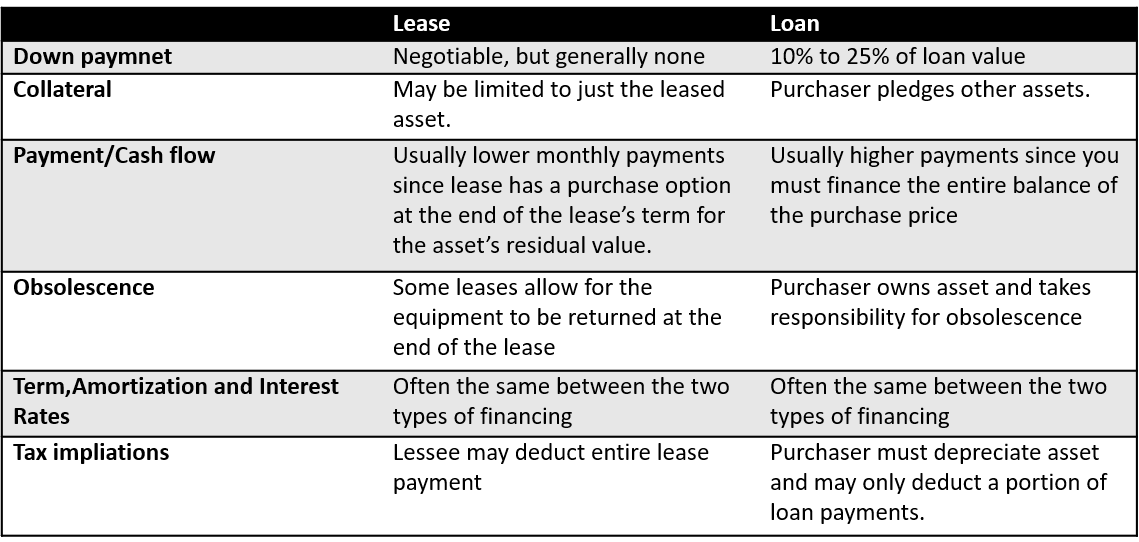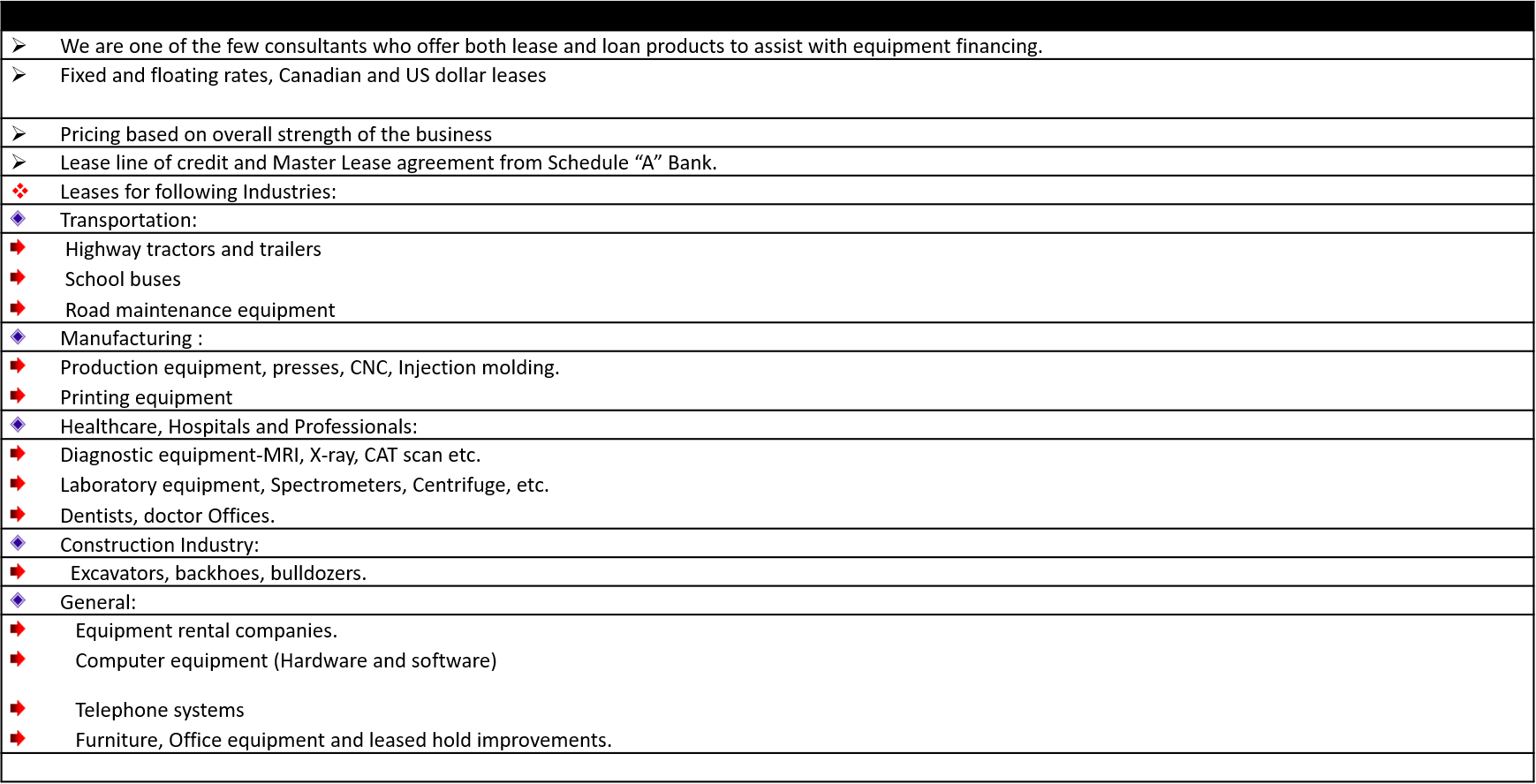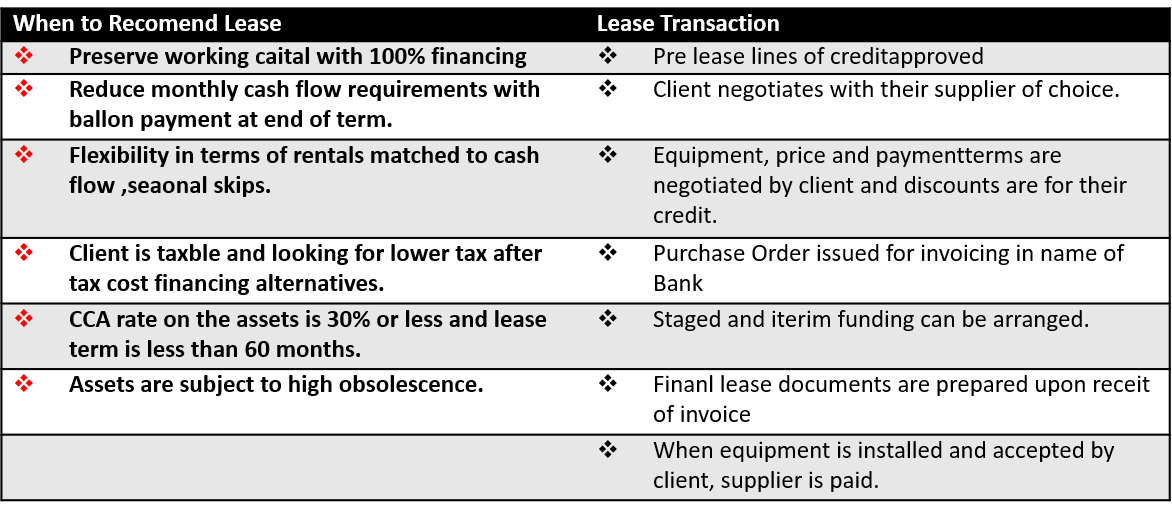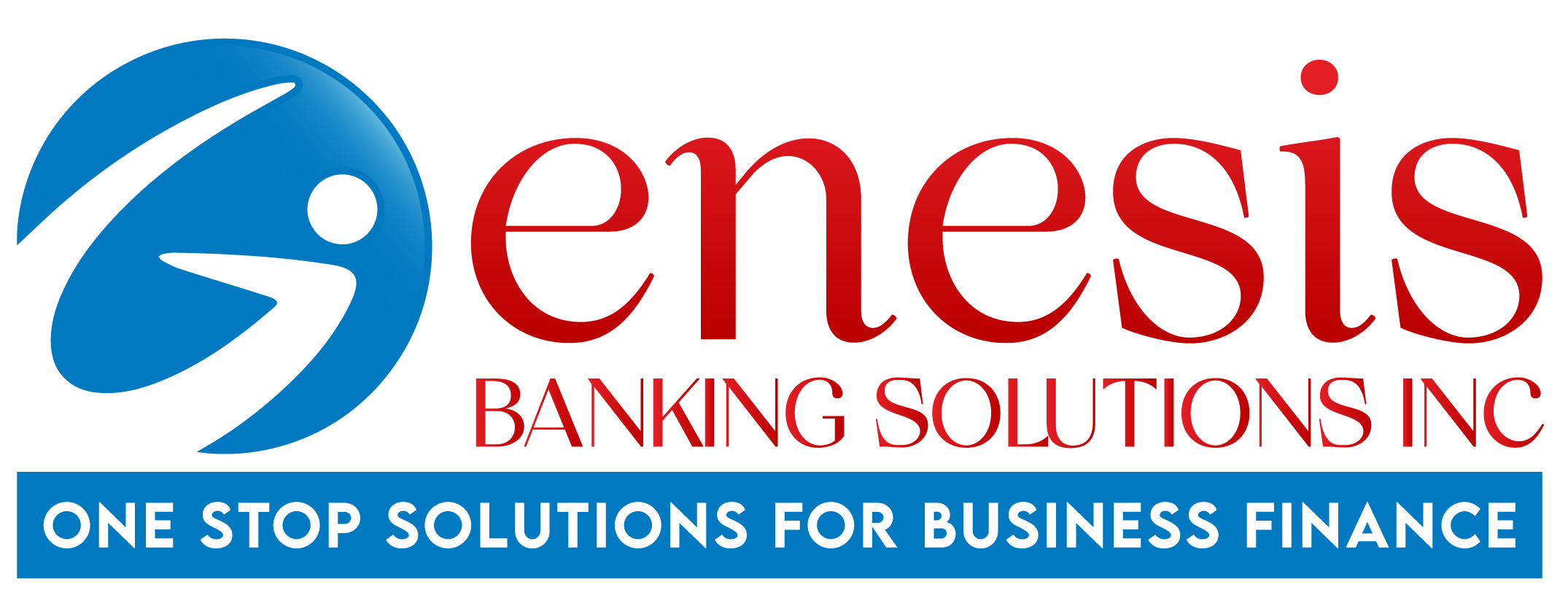Capital Lease and Equipment Financing
Your competitors are growing-are you?
Acquiring new equipment is often best way to boost productivity and increase capacity. Financing this investment in your business, however, can be of greatest challenges for many businesses. Leasing can be efficient and effective alternative tool of finance managing and maintaining growth and planning for the replacement of existing equipment’s and technology, while reserving cash flow. Paying for equipment may restrict which could be better be deployed to finance receivables and inventory or distribute to shareholders. Avoiding the heavy up-front cash of purchasing equipment and reducing monthly finance payments are two of the key reasons why many companies prefer to lease.
There are many variables you will want to consider when deciding to lease or purchase equipment, some of which you will find explained below; We at Genesis can help you decide what’s right for your business needs. We have expertise to answer questions and help structure a lease to suit your situation.
Is leasing right for your Company?First consider how long you will actually use the equipment in question. If you only need it for a limited period, if the equipment will soon become obsolete, or if you prefer to upgrade every couple of years, then leasing may be the better option. If you plan to keep the equipment for its entire useful life it may or may not be better to buy it, depending on your cash flow requirement and tax situation. Some leases are structured for specialized purposes such as allowing your company to accelerate claims for tax credits they can be advantageous even if you plan to keep the asset for its entire productive life. It is important to consider fully the financial implications before deciding between leasing a loan or a cash purchase. It is generally not wise to pay for long term assets with working capital- the money you need to run your business. If you do, you may hinder your future ability to pay recurring obligations like rent, utilities, or payroll if business conditions get tougher. |
|||
Weighing leasing versus borrrowing to buy:Below is a table highlighting some the pros and cons of leasing. Before deciding to lease, compare the total leasing cost with the total cost of financing the purchase price by way of loan. Remebr to include the costs of any loan interest, insurance and taxes that you expect to pay if you own the asset. Please call us our expert team who will work through these complex calculations for you and advise you on the best way for you to finance the growth of your business. |

Why to lease ?

Sale-Leaseback arrangements:Leasing can be an ideal from financing for expensive income-producing equipment as well as leasehold improvements, computers, office furniture and many other equipment requirements. Start-up Programmost financial institutions will not finance companies that are just going into business. If your company has just started in business or is in business for a short time usually less than two years, we can help you grow by financing the equipment you need to be successful. The above list is only an example of what we can arrange finance. We can finance any state or federally controlled entity. |
|||
Bottom line:It may be beneficial for you to look at selling and then leasing back some of the long-term operating assets you currently own. For example, plant and equipment used for production can some time be sold to leasing company if you commit to leasing them right back. Such an arrangement unlocks the equity in these assets, freeing it up for other purposes that may be more strategically important (i.e. financing the increase in receivables and inventory or to help finance a shareholder buyout or to simply distribute the cash to the shareholders). |
|||
Why Lease?Leasing is the right choice!Leasing is one of the fastest growing ways of acquiring equipment in business today. Recent surveys found that 80% of U.S. businesses, from Fortune 500 to the local family business, lease some portion of their equipment. A growing business often faces the dilemma of limited cash flow and the need to add equipment. Leasing can put the equipment to work for you with real cash flow advantages and without major capital investment. We can lease virtually any type of equipment, including software and installation. Low monthly paymentsthe monthly lease payment will usually be lower than the payment required by other methods of financing. No need to tie up capitalKeep your business’ cash for future needs, unexpected expenses or working capital when revenues are low. |


You can always lease equipment – you can’t lease money!
Most types of financing require down payments of up to 25%, whereas leasing covers 100% of the cost of the equipment. Most leases require only one or two payments in advance. Get immediate use of the equipment with minimal up-front cost.
Preserve existing lines of credit
Leasing has no impact on your bank credit lines. Protect your borrowing power for other business needs or opportunities.
Eliminate obsolescence
Technology is changing at a rapid-fire pace. What meets your business’ needs today may be obsolete three years from now. Leasing allows you the flexibility to maintain a competitive edge by giving you today’s best technology then allowing you to upgrade when the equipment has outlived its advantage.
Fixed payments through the term of the lease
unlike bank lines of credit that usually have variable rates, lease payments are fixed no matter what happens in the market. By choosing to lease you will not be a victim of skyrocketing interest rates. Remember the 80’s when rates rose from 9% to over 20% in one year? That can not happen with leasing.
Significant tax and accounting advantages
leasing eliminates the need for complicated depreciation schedules since lease payments are generally line-item expenses on your P&L statement. And since lease payments can usually be treated as a pre-tax business expense you may even reduce your taxes. Paying cash for equipment automatically adds 30-40% to the cost when you realize that cash = profits and taxes are paid on profits. Leasing is the right choice! It minimizes demands on cash flow, eliminates obsolescence, keeps your bank lines open, saves on taxes and shelters you from the market.
